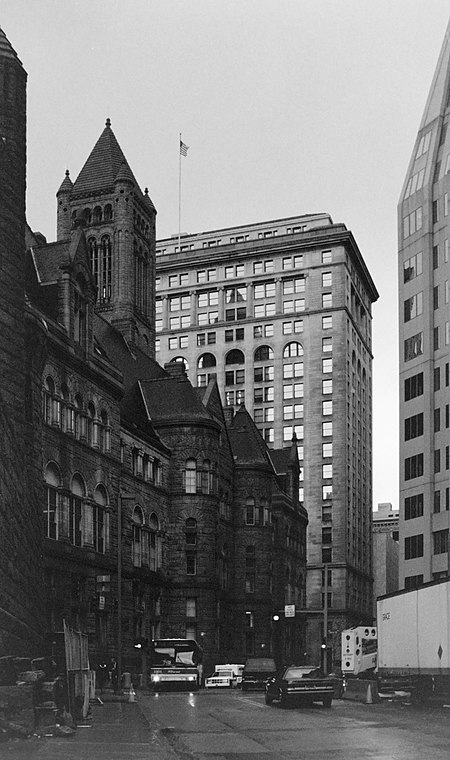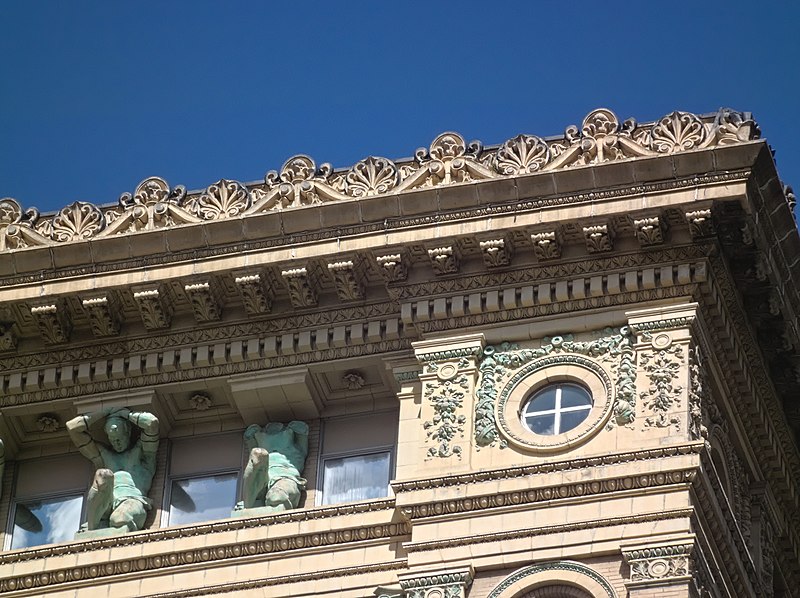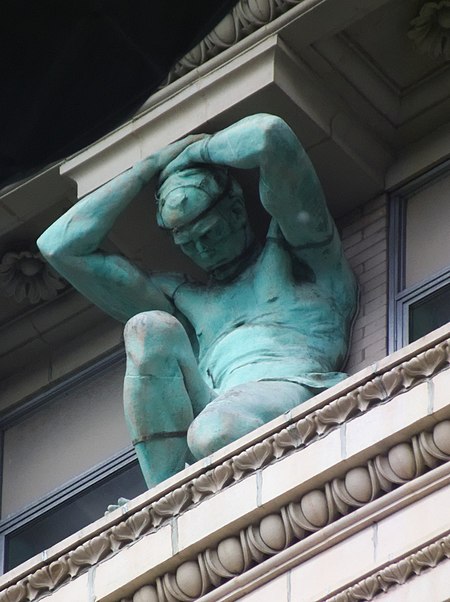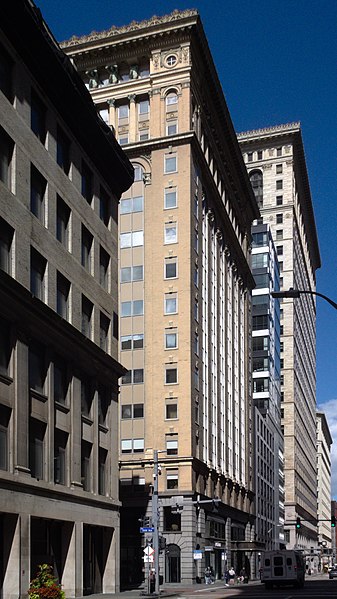
Taken on film in 1999. Note the bus coming toward you; apparently old Pa Pitt has been taking bus-coming-toward-you pictures for at least twenty-three years.

A “telamon” is a male human figure used as an architectural support. Most architectural references regard the term as interchangeable with “atlas” (of which the plural is “atlantes”), but some working architects seem to have distinguished the two, “telamones” being youthful, beardless figures, and “atlantes” being older bearded figures with pronounced or exaggerated musculature, like the atlantes on the Kaufmann’s clock. At any rate, the 1896 Park Building, which is our oldest standing skyscraper (if we don’t count the seven-storey Consetoga Building as a skyscraper), has thirty of these figures supporting the elaborate cornice. The sculptor seems not to be known, which is a pity, because these are exceptionally fine work. The architect was George B. Post, who also designed the New York Stock Exchange and the Wisconsin state capitol, among many other notable buildings.


One of these fellows has lost his head, which you might do, too, if you had to hold up a cornice like that for 126 years.



At some point in the middle twentieth century it seemed like a good idea to someone to fill in the shaft of the building with modernistic columns of windows. It was not a good idea.

Uptown is a neighborhood in transition, and it still is not entirely clear what it will become. Will these rowhouses become valuable properties worth restoring? Or will they be knocked down for skyscraper apartments? Or will the development mania grind to a halt before it reaches this block? These two houses are in pretty good shape and worth preserving for their nearly intact fronts. Both have some fine woodwork. The one on the left has had some unfortunate renovation done to the dormer, but otherwise nothing bad has happened to it. It has newer windows, but in the right size and shape, and if you painted those aluminum frames they would be indistinguishable from the originals. The one on the right is even more perfectly intact. Note its proper Pittsburgh stair railing: in Pittsburgh, railings are a plumber’s art.